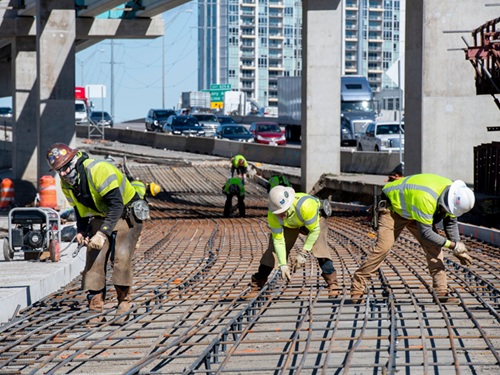Seven organizations representing state and local governments sent a letter to Congressional leadership on November 8 backing a bill passed by the Senate in October that would provide greater flexibility in spending American Rescue Plan or ARP funds – especially on infrastructure projects.
That bill – entitled the State, Local, Tribal, and Territorial Fiscal Recovery, Infrastructure, and Disaster Relief Flexibility Act and sponsored by Sen. John Cornyn, R-Tex., and Sen. Alex Padilla, D-Calif. – allows state governments to use unspent monies from the state/local fiscal recovery fund within the $1.9 trillion ARP on natural disaster relief and infrastructure needs.

More than 20 organizations – including the American Association of State Highway and Transportation Officials – have endorsed this same bill.
The seven signatories to this particular letter – the United States Conference of Mayors, National League of Cities, National Association of Counties, International City/County Management, Council of State Governments, and National Governors Association – argued that greater flexibility in the use of ARP funding would help state and local governments “mitigate, respond, and recover” from the COVID-19 pandemic.
“America’s state and local governments have been engaged in our nation’s response to COVID-19 since the earliest days and providing these governments with flexible, essential financial resources is the surest way to see that our nation’s preparedness and responsivity continues,” the letter said.
Those organizations said the bill would help state and local governments in three distinct ways:
- It would allow them to allocate up to $10 million of ARP funds for the provision of government services without using complicated budgetary analysis to calculate lost revenue, while at the same time retaining the original provision of the law that would allow a higher amount if justified under Treasury’s revenue loss calculator.
- It would allow use by state or local governments of either $10 million or 30 percent of the total ARP allocation – whichever is greater – under a new, separate provision that further allows infrastructure-related activities authorized under federal surface transportation laws or Title I of the Housing and Community Development Act of 1974.
- It would also allow the use of Coronavirus Local Fiscal Recovery Fund or CLFRF monies to provide “emergency relief” from natural disasters or the negative economic impacts of natural disasters, including temporary emergency housing, food assistance, financial assistance for lost wages, or other immediate needs.
In a related move, AASHTO also co-signed a March 28 letter with 35 other transportation organizations to Treasury Secretary Janet Yellen seeking “clear guidance and flexibility” regarding the use of ARP funds to support transportation infrastructure projects.
In a separate letter sent in July, AASHTO’s transportation policy team noted that the fact sheet Treasury issued with its interim final rule – specifically on page 60 – conformed to that funding request.



